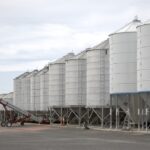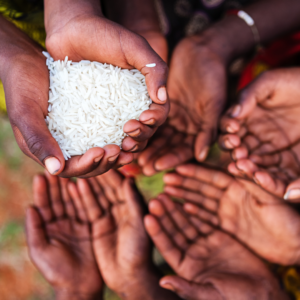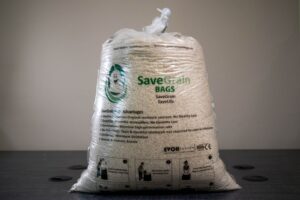Rice is one of the most important food crops worldwide. In fact, in most developing countries, it is counted as a dietary staple for a majority of the population. In spite of this fact, a large portion of rice ends up going to waste due to challenges encountered in the post-harvest management of rice. Addressing such challenges is necessary to minimize the loss of rice and maintain rice quality until the grain reaches the end consumer. This will contribute to greater food security and in turn, higher agricultural income.
What are the challenges faced during the harvest of rice?
The quality and quantity of the final milled rice depend on the efficiency of farming management and field operations.
Harvesting Time
Timing is key. Harvesting rice at the right time helps avoid grain losses. Generally, the correct time to harvest rice is one week before the maturity date.
Harvesting Operations
Harvesting and handling the crop correctly could significantly reduce post-harvest losses. This includes processes such as:
- cutting the rice stalk
- reaping the panicles
- laying out the paddy-on-stalk
- or stacking it to dry
- bundling for transport
Inefficiency at these stages could also affect the final product.
Challenges encountered during the post harvest management of rice
The post-harvest handling of rice covers the period after harvest through to its final consumption, which mainly include:
Drying
To make any form of grain storage ready, drying the grain is essential. Any issue in drying could lead to spoilage of the paddy, discolouration, mold growth, and ultimately, the loss of crop.
For us to understand how to properly dry paddy, it is first important to know and monitor its moisture content. A rice paddy is usually harvested when the grain moisture content stands between 24% to 26%. The harvested rice should be dried to 15% or less to prepare it for storage.
The traditional sun drying method is fallible to the unpredictability of weather, and could lead to the re-wetting and spoilage of the paddy crop. On the other hand, artificial drying systems overcome such disadvantages and are capable of protecting crops from rains and weather changes. However, factors such as high fuel costs, large capital investments and the general lack of knowledge among the smaller community farmers constrain the use of such systems.
Apart from that, the main causes of loss during drying paddy are:
- grains shattering from stalks
- birds and domestic fowls
- over-drying
- delayed drying
- no grain aeration
It’s important to avoid these errors during the drying process to prevent the loss of a staple crop.
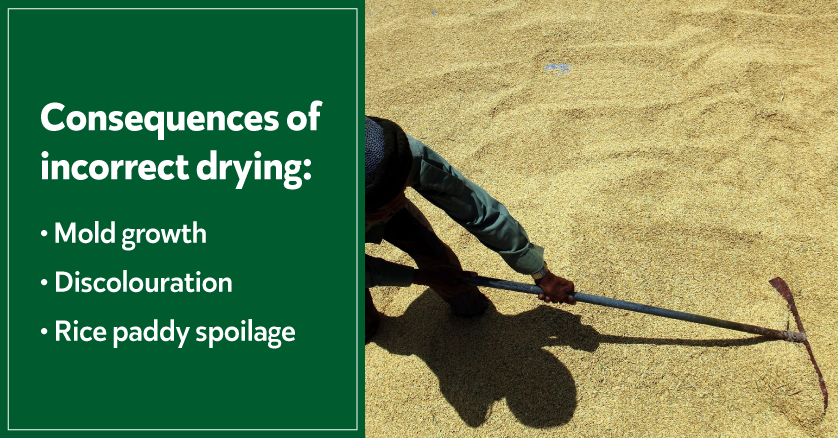
Moreover, proper drying can in turn lead to the proper storage of rice.
Storage
As for any crop, proper storage is elemental for rice too, to prevent its loss due to moisture, microorganisms, insects, pests, and unpredictable weather.
Main challenges that arise for the storage of rice include:
- Moisture and weather changes: Maintenance of the paddy’s moisture content is just as critical during the storage period as during drying, as is protecting it from unfavourable weather changes. Failing to do so would lead to re-wetting of the stored rice, making it unfit for human consumption.
- Insects and pests: Attacks by insects, rodents and birds due to inadequate protection are common causes for major losses by contamination of rice.
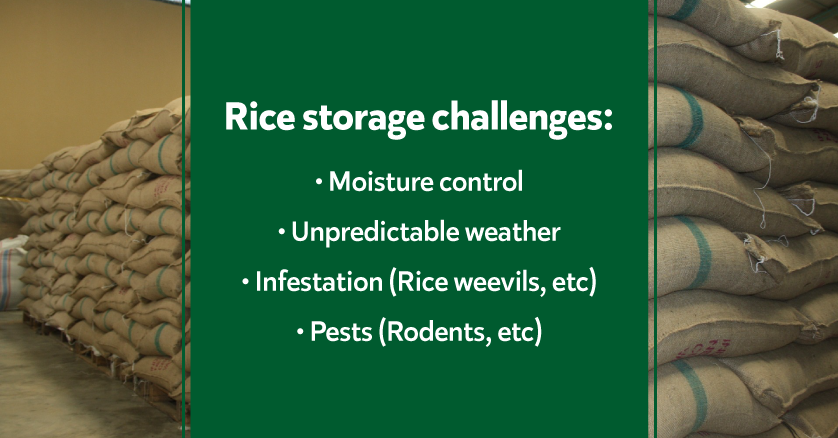
While better management and increased awareness need to prevail for significant changes to occur at the various harvest and post-harvest stages, storage is one stage where Save Grain Bags can come to the rescue. We offer storage bags which use hermetic technology, providing an air-tight and moisture-tight barrier, protecting the precious paddy crop from not only unfavourable weather but also from infestation.
For one of the world’s most important crops, only the best should do, and hermetic storage technology is an answer to better post harvest management of rice and other such crops.
